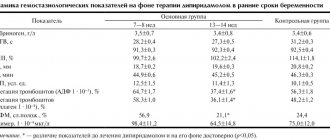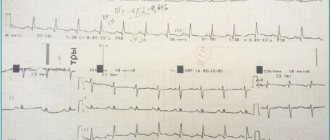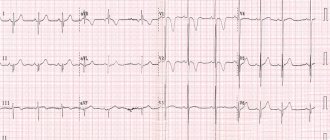Change times year brings pleasant variety to our lives. After the stuffy summer days The coolness pleases us, the monotonous green of the leaves is replaced by a riot of colors. But when the leaves fall and the temperature is no longer comfortable, many feel like their battery is dead. The person is overcome by apathy, constant drowsiness. I want to Eat a lot, the body requires sweet, fatty, fried foods and not getting off the couch. But no one canceled their studies or work. Constant absent-mindedness and weakness have a bad effect on work results and prevent you from studying well, making a career, or running a business. Some take vitamins or go to the doctor and get examined. It is useful to monitor your health and undergo an annual medical examination, but autumn drowsiness, if there are no other unpleasant symptoms, should not be a cause for concern. This is a natural reaction of the body to cold weather and reduced light day.
Why do you always feel sleepy in the fall?
In autumn, hours decreases . Sunny summer days are replaced by cloudy weather. A person receives less ultraviolet radiation. The production of the hormone melatonin, which is involved in regulating the body’s circadian rhythms, decreases. If it is deficient, the biological clock does not work as accurately, and it is difficult for a person to fall asleep in the evening, wake up in the morning, and want to sleep .
Melatonin is needed for the synthesis of serotonin. If its quantity decreases, the body produces less of the joy hormone, and the person feels unhappy for no apparent reason.
It is genetically determined that in preparation for winter , the body accumulates fat reserves. Because of this, your appetite increases and you crave high-calorie food. In order to store fat reserves, he strives to reduce physical activity, resulting in greater weakness , apathy, and drowsiness.
This is a natural seasonal phenomenon. There is no need to be afraid of your condition or create additional stress by going on a strict diet or increasing physical activity. Don't be afraid to gain 2-3 kg. A slight increase in body weight reduces the risk of colds and flu. And it’s easier to regain your previous weight in the spring, when your biorhythms change again and you feel a surge of energy.
Sleep disorders
One of the most obvious causes of increased fatigue is chronic lack of sleep. During sleep, hormones are released that regulate metabolism and energy levels, and toxic metabolic products that accumulate during activity are removed. The metabolic rate is significantly reduced, which allows for recovery processes10.
According to modern recommendations, the optimal duration of night sleep for adults should be an average of seven hours. In this case, sleep should be calm and uninterrupted. Taking a short nap during the day can also help boost your energy levels during the day. Studies have proven that a set sleep schedule with a clear time frame for falling asleep and rest duration can reduce fatigue and eliminate sleep problems10.
At the same time, prolonged sleep during daylight hours contributes to disruption of circadian rhythms and disruption of the biological clock. This is another common cause of chronic fatigue. Disturbances in circadian rhythms are also associated with jet lag, night shift work, regular lack of sleep, the habit of falling asleep with a light source, and other factors10.
Most common reasons
There are several reasons why you want to sleep in the fall :
- lack of sunlight – it affects the production of hormones;
- the body is preparing for winter - for some people, seasonal weight fluctuations are well expressed, for others they are almost not felt;
- uncomfortable temperature - over the summer we have become accustomed to the heat, and when the temperature outside the window drops, and the heating has not yet been turned on in the apartment, it reacts to a change in the usual climate, reduces activity in order to conserve heat and energy;
- weakened immunity - due to decreased doses of ultraviolet radiation, the production of vitamin D decreases; in the second half of autumn, the proportion of fresh local vegetables and fruits in the diet decreases;
- freezing – the weather in autumn is unstable, and when leaving the house in the morning it is difficult to choose the right clothes so as not to freeze;
- fatigue – after the end of the holiday season, many companies launch new projects, introduce various innovations, and an increase in work volumes and new demands cause stress, the desire to sleep is a natural defensive reaction;
- exacerbation of chronic diseases - many chronic diseases worsen in autumn and spring, which leads to a deterioration in well-being.
Unbalanced diet
A number of studies have found that consuming excess amounts of simple carbohydrates can make you feel tired during the day. This is due to the ability of these nutrients to quickly increase blood glucose levels, which in turn leads to the immediate production of large amounts of insulin, which removes sugar from the blood into the cells. A sharp increase and subsequent equally sharp decrease in sugar levels causes a feeling of fatigue4.
Another reason for increased fatigue is a low-calorie diet. When there is a negative balance between calories in food and energy expenditure, metabolism slows down, which can be associated with a feeling of fatigue. To prevent a slow metabolism, most people need to consume at least 1,200 calories per day5.
It is important to consume enough protein, which increases your metabolic rate more than carbohydrates and fats5. In addition, research shows that fatigue is reduced by increasing the content of branched-chain amino acids, which are the building blocks of protein. Therefore, to keep your metabolism high enough to prevent fatigue, you should consume protein at every meal6.
Why is autumn drowsiness dangerous?
Drowsiness and weakness occur due to the approach of winter , but it can be the first sign of dangerous diseases: diabetes, heart failure, atherosclerosis, anemia, oncology. If there are other symptoms (increased sweating, palpitations, dry mouth, constantly thirsty, loss of appetite, weight loss, etc.), discuss the reasons for lethargy with your doctor.
Unless you have an underlying medical condition, drowsiness can also be life-threatening. Difficulty concentrating can be deadly for drivers and pedestrians, and for people who operate complex machinery and equipment. Absent-mindedness is not life-threatening, but it can create big problems for a student, accountant, or store clerk.
Causes of weakness and headaches
Often such conditions are caused by improper daily routine and high stress, which together does not give the body the opportunity to fully recover. Therefore, people who do not allow themselves normal rest and continuous sleep for 7-9 hours often experience increased fatigue, frequent headaches, drowsiness and irritability. In such cases, a certain pattern is observed: drowsiness during the day and difficulty falling asleep at night.
But this cannot be ignored and considered a variant of the norm, since with a long stay in such a stressful state for the body, chronic fatigue syndrome can develop, which you will no longer be able to cope with on your own, and the treatment will be quite long. Therefore, in case of headaches or increased fatigue that occur against the background of increased stress, it is important to immediately review your daily routine and adjust it so as to provide the body with the opportunity to recover. Sometimes this requires delegating some of your tasks to other people or even changing your type of activity.
Headache is also called cephalgia.
Also, a headache can occur in combination with weakness and for other relatively harmless reasons:
- decreased blood glucose levels due to a low-carbohydrate diet;
- changes in hormonal levels in women during pregnancy or before the onset of menstruation;
- dehydration, which is especially typical for various types of poisoning, accompanied by nausea and vomiting;
- taking certain medications, in particular antihypertensives and diuretics.
In such cases, it is worth considering such a condition as temporary and not causing serious concern. Nevertheless, it is necessary to take measures to eliminate the causes of weakness: increase the amount of carbohydrates and fluids consumed, discuss with your doctor the possibility of changing the prescribed drug, etc.
There is often a headache and weakness due to acute respiratory infections, including infection with COVID-19. But usually this is accompanied by other characteristic symptoms in the form of fever, cough, sore throat, etc., which are familiar to everyone.
Apart from respiratory infections, the most common causes of headaches and weakness are:
- migraine;
- VSD;
- pathologies of the cervical spine;
- fibromyalgia;
- diseases of the cardiovascular system;
- anemia;
- thyroid dysfunction.
Migraine
Migraines are a serious problem of the 21st century. According to statistics, about 12% of people around the world suffer from them, and the debilitating headaches that are characteristic of them deprive a person of their ability to work for a long time.
Attacks are usually accompanied by:
- unilateral, much less often bilateral, throbbing headaches, concentrated in the forehead, temples, around the eyes and tend to intensify with time and with stress (the side of the pain may change from attack to attack);
- nausea and vomiting due to reflex irritation of the corresponding center of the brain;
- increased sensitivity to light and sounds;
- severe general weakness;
- decreased appetite.
WHO included migraine in the list of 19 diseases that most significantly reduce the social adaptation of patients.
In some patients, several hours or even days before the onset of an attack, a so-called prodrome is observed, which consists in the appearance of a complex of precursors. This could be weakness, difficulty concentrating, or, conversely, an increase in activity and appetite. This is often accompanied by a feeling of tension in the neck muscles, increased sensitivity to light, sound and olfactory stimuli.
There are 2 main types of migraine: simple and with aura. An aura refers to a complex of neurological symptoms that precede a headache attack. They can be very diverse, on the basis of which they distinguish between visual, hemiparesthetic aura, etc. Visual aura is more often observed, which is characterized by the development of various types of visual impairments:
- unilateral loss of visual fields;
- flickering of flies before the eyes;
- the appearance of flickering luminous lines.
The aura should not be confused with the prodrome. The latter occurs no more than an hour before the development of cephalalgia and completely disappears with the onset of pain in the head.
After the end of the attack, which can last 3-4 hours or several days, patients experience fatigue and drowsiness. In women, migraine attacks are often associated with the menstrual cycle and are not accompanied by an aura. But in any case, the presence of migraine requires consultation with a neurologist, since it greatly reduces the quality of life and can lead to severe depression and other psychological complications.
VSD
The term “vegetative-vascular dystonia,” although outdated, is still often used by neurologists to describe disturbances in the functioning of the autonomic nervous system, leading to changes in the functioning of the body. They are a consequence of somatic or neurological diseases and are not independent. Thus, VSD is a collective concept that describes the clinical picture, but does not indicate the cause of the development of undesirable symptoms. Therefore, when diagnosing it, further examination is required in order to discover the true causes of the disturbance in well-being.
VSD is characterized by a large complex of symptoms:
- headaches of varying nature, strength and duration, including migraines;
- attacks of dizziness, darkening of the eyes with the risk of loss of consciousness;
- increased fatigue, weakness, drowsiness;
- increased heart rate;
- fluctuations in body temperature;
- mood swings, increased anxiety, irritability, panic attacks;
- noise in ears;
- increased sweating.
Based on which of them predominate, different types of VSD are distinguished. In particular, headaches, severe weakness, and dizziness are characteristic of cerebrovascular syndrome. This is often accompanied by nausea, noise in the head, and presyncope. Most often, this occurs against the background of fluctuations in blood pressure, spasm of blood vessels and other disorders.
Also, general weakness and decreased performance are characteristic of asthenic syndrome. But in this case, they will predominate in the clinical picture, and headaches will occur less frequently and be less pronounced. Asthenia is also characterized by a decrease in the speed of thinking, sudden changes in mood, disturbances in the functioning of the cardiovascular system and gastrointestinal tract.
VSD is diagnosed twice as often in women, and the first attacks are observed at a fairly young age - up to 25 years, including in children.
The presence of VSD is a risk factor for the development of cardiovascular, endocrine and other complications, in particular hypertension, diabetes mellitus, as well as vegetative crisis. It is a strong, sudden onset attack, accompanied by numerous autonomic disorders and a panic attack. In such cases, you may experience:
- severe increase in headache;
- increase or decrease in blood pressure;
- coldness, numbness of the extremities;
- pale skin or, conversely, a feeling of heat, redness of the face;
- nausea;
- increased frequency of bowel movements;
- suffocation.
A panic attack is a pronounced emotional reaction to a stressful situation, accompanied by the active release into the blood of a number of hormones and other biologically active substances aimed at mobilizing strength to overcome the impending threat. This leads to excessive stimulation of the autonomic nervous system, which provokes the emergence of irrational fear, which in turn further increases the release of hormones into the blood. This creates a vicious circle that is difficult to break. Therefore, if symptoms of VSD occur, it is important not to delay contacting a neurologist.
Pathologies of the cervical spine
It is disorders in the cervical spine that are very often accompanied by weakness and cephalgia, since important blood vessels, the vertebral arteries, pass through it. They are responsible for adequate nutrition of the brain, and therefore, when they are compressed by displaced vertebrae or other structures, the blood supply to the brain is disrupted. This leads to the development of ischemia of its tissues, which is accompanied by headaches, weakness and a number of other symptoms. These include:
- displacement of the first cervical vertebra (atlas), which is usually a consequence of injuries, especially those received in an accident;
- osteochondrosis;
- protrusion and hernia.
Very often today, people of different ages, gender, and social status are diagnosed with osteochondrosis, as well as its complications - protrusions and intervertebral hernias. These diseases are characterized by the occurrence of degenerative-dystrophic changes in the intervertebral discs separating the vertebrae. As a result, their height decreases, which leads to the convergence of the vertebrae and the creation of preconditions for their infringement of the spinal roots passing right there.
Without treatment, degenerative-dystrophic changes in the discs progress, and over time, protrusion is formed - protrusion of part of the disc outward. It tends to gradually increase in size, and subsequently transform into an intervertebral hernia. In such cases, the risk of nerve root compression increases dramatically.
Also, osteochondrosis and its complications are accompanied by the formation of osteochondral growths – osteophytes – on the surface of the vertebral bodies. They can reach large sizes and, like hernias, mechanically compress the vertebral arteries, which will lead to weakness and headaches. In this case, cephalalgia is one of the main symptoms of osteochondrosis of the cervical spine, even in the absence of damage to the vertebral arteries.
Other symptoms of cervical osteochondrosis are:
- crunching in the neck when bending or turning the head;
- pain in the neck, radiating to the back of the head, arms;
- reflex spasm of the neck muscles, increasing pain;
- mobility restrictions;
- sensory disturbances in various areas of the upper extremities, back of the head, neck;
- difficulties with swallowing, etc.
The disease cannot go away on its own. It is characterized by periods of exacerbation and remission, but it constantly progresses, and in advanced cases requires surgery to remove large hernias. Therefore, when its symptoms appear, you should immediately contact a neurologist.
Fibromyalgia
Fibromyalgia is a disease accompanied by chronic pain in the musculoskeletal structures, increased fatigue and diffuse tension headaches. Its additional symptoms are:
- stiffness of movement, increasing during physical activity;
- digestive disorders;
- sleep disorders;
- increased level of anxiety, nervous tension;
- deterioration of cognitive functions, especially concentration.
Most often, fibromyalgia is diagnosed in women 35-55 years old.
Diseases of the cardiovascular system
Weakness and headache are frequent companions to pathologies of the heart and blood vessels. Often similar symptoms are observed in patients with high and low blood pressure. In the first case, we are talking about hypertension, which can have various causes for its development from atherosclerosis to disorders of the kidneys. An increase in blood pressure is accompanied by:
- pain in the back of the head, temples;
- tinnitus;
- weakness;
- increased sweating;
- increased heart rate.
A decrease in blood pressure is usually accompanied by:
- severe weakness, dizziness up to loss of consciousness;
- pale skin;
- increased sweating;
- headache in the forehead, upper part of the head.
Blood pressure disorders are rarely isolated. In most cases, this is facilitated by the development of other disorders in the functioning of the heart and blood vessels. Therefore, to improve the condition, it is necessary to act directly on the cause, the determination of which is impossible without laboratory and instrumental diagnostic methods and consultation with a cardiologist.
Iron-deficiency anemia
This condition is the main cause of increased fatigue and is often combined with headaches of varying intensity. It is characterized by a decrease in the number of erythrocytes (red blood cells) and hemoglobin. As a result, the amount of oxygen carried by the blood decreases, which leads to hypoxia of cells, tissues and organs, in particular the brain. This provokes the occurrence of cephalalgia and general weakness, the severity of which largely depends on the severity of anemia, i.e., the level of hemoglobin in the blood.
Anemia cannot be called a separate disease, since it is a consequence of other pathological changes in the body, especially those accompanied by bleeding, including hidden (endometriosis, peptic ulcer of the stomach and duodenum, Crohn's disease, hemorrhoids, etc.). It most often affects pregnant women and children, although a decrease in hemoglobin levels as a result of a lack of iron in the body can be observed at any age in both women and men.
Iron deficiency anemia is also characterized by:
- decreased appetite;
- severe pallor of the skin and mucous membranes, peeling of the skin, formation of cracks;
- drowsiness during the day;
- attacks of dizziness, tinnitus, flashing spots before the eyes;
- feeling of heartbeat;
- changes in taste preferences with the appearance of cravings for inedible items;
- cracks in the corners of the lips;
- brittleness of nails, appearance of transverse stripes on them;
- deterioration of the condition of the oral cavity with the development of various diseases (glossitis, caries, periodontal disease, stomatitis, etc.), etc.
Anemia can be diagnosed using a routine general or clinical blood test. With its results, you should consult a therapist or pediatrician if weakness and headache are observed in the child. The doctor will select a suitable drug to eliminate iron deficiency in the body, which will need to be taken for 1-5 months, depending on the severity of the anemia.
Thyroid dysfunction
The thyroid gland is an internal secretion organ that produces thyroid hormones. Its hyperfunction, like hypofunction, is accompanied by weakness.
In hypothyroidism, when there is a decrease in the production of thyroid hormones, weakness is mainly present in the limbs. At the same time, patients say that everything falls out of their hands, their legs give way, and it becomes more difficult for them to do household work.
With hyperthyroidism or excessive synthesis of thyroid hormones, other symptoms are observed:
- increased nervous excitability;
- trembling in hands;
- low-grade body temperature;
- increased heart rate;
- weight loss in the absence of changes in the nature of nutrition and intensity of physical activity.
How to overcome drowsiness
If you have no energy during the day , it’s difficult to concentrate, constantly want to sleep, help your body quickly overcome this unpleasant condition:
- review your diet;
- walk more in the fresh air;
- go to bed at the same time ;
- dress appropriately;
- find new sources of positive emotions;
- avoid stress and overwork.
What to eat so you don't want to sleep during the day
Start the day with a full breakfast containing complex carbohydrates: oatmeal, buckwheat, rice porridge, durum pasta, potatoes, whole grain bread. They will give you a boost of energy for several hours, and in the first half of the day you will be alert and productive.
No matter how busy you are, don't skip lunch. Don't limit yourself to snacking on the go, but don't eat too much either.
Don't skip dinner; it's hard to sleep on an empty stomach. In the evening, eat easily digestible proteins: lean meat, fish with a side dish of vegetables, dairy products.
To strengthen your immune system and look good, eat fresh fruits and vegetables more often. Do you constantly feel apathy and irritation? Eat a banana or chocolate. They contain the joy hormone serotonin, the production of which in the fall .
Autumn is not the best time for strict diets. Strict dietary restrictions are more difficult to endure than in summer or winter. The risk of developing depression and rapid weight gain increases when returning to the previous diet.
Physical activity
Do not encourage the body's desire to fall into winter sleep , provide it with moderate physical activity. Spend more time outdoors. Try to walk for at least an hour every day. If you regularly exercise, do not stop training, but you can reduce the load a little.
If, due to increased appetite and cravings for sweets, you have gained a few extra pounds, do not exhaust yourself with additional training. They will become stress for the body. He may respond by increasing his appetite or becoming even more drowsy.
Keep a daily routine
To stay alert and productive, you need to sleep at least 7-8 hours a day. Make your bed comfortable (orthopedic mattress, low pillow, blanket appropriate for the temperature in the bedroom). Ventilate your bedroom before going to bed. Two hours before bedtime, give up coffee and strong tea (black or green), but you can drink mint infusion, milk with honey.
Dress properly
I want to wear open summer dresses and a thin jacket for as long as possible. But, if you freeze on the way to work, then once you warm up, you will want to sleep. And you will increase the risk of catching a cold or the flu. Keep things on hand that you can wear if it suddenly gets cold.
Positive emotions
Positive emotions and new impressions will help you overcome drowsiness and become more energetic. Read interesting books, watch good films, funny comedy shows, listen to your favorite music, update your wardrobe or the interior of your apartment. But, if you cannot cope with depression on your own, consult a doctor and discuss with him the need to take tonic vitamin complexes, antidepressants or drugs to improve brain function.
Symptoms of pathological drowsiness
Treatment of drowsiness in Moscow begins with identifying its symptoms. The main symptom in this case is a periodic or constant desire to sleep during the daytime. A person can remain asleep for 12-14 hours and still not feel rested. The patient also has:
- difficult awakening;
- inability to get up quickly when the alarm rings;
- increasing the duration of the transition period from sleep to wakefulness.
Hypersomnia can manifest itself constantly or in attacks, but in any form there is a significant decrease in quality of life.
Such a person cannot work fully, as he is forced to take a nap during the day. In a number of patients it brings temporary relief, but more often a single or repeated rest does not help, and the feeling of drowsiness persists.
With narcolepsy hypersomnia, the patient is unable to control himself and often falls asleep in the most unexpected places. Over time, people with this diagnosis begin to feel the onset of an attack in advance and take a comfortable position. During periods of transition between sleep and reality (when waking up or falling asleep), narcolepsy may cause hallucinations. Sometimes catalepsy is observed - a pronounced decrease in muscle tone, which does not allow movement immediately after sleep.
The psychopathic form of drowsiness is accompanied by an unpredictable picture. Cases are described when patients fell asleep after a hysterical attack and remained in this state for several days. But when diagnosed using polysomnography and EEG, they did not reveal any signs characteristic of sleep. After which it turned out that the person was simply lying motionless with his eyes closed. Post-traumatic drowsiness sometimes occurs in the absence of severe damage to brain structures, and doctors tend to assume that the cause is the stress experienced during the injury. Then it is more appropriate in this case to talk about the psychopathic form of hypersomnia.
Drowsiness in young people between 15 and 30 years old often begins for no apparent reason. They have a constant desire to sleep, difficulty waking up with manifestations of aggression. The symptom of “sleep intoxication” is often observed when a person is in a state of twilight consciousness. With idiopathic drowsiness, there are short episodes of ambulatory automatism with automatic, unconscious actions.
Sleep apnea is characterized by frequent awakenings and stopping breathing up to 5 times per hour for 10 seconds or more. At the same time, there is severe snoring, a constant desire to sleep during the day, nocturnal enuresis, headaches in the morning, and high blood pressure. Lack of treatment leads to a change in the patient's personality and a decrease in his intelligence. Mental illnesses of an endogenous nature are sometimes accompanied by hypersomnia. Daytime sleepiness is especially common during seasonal depression and during the onset of schizophrenia in adolescents.
When sleep continues for a day or more, this state is called lethargy. Most often it occurs against the background of epidemic encephalitis or as a result of damage to the reticular formation.
Severe daytime sleepiness due to night sleep disorders
It seems that enough time has been spent in bed, but weakness and drowsiness during the day haunt you and reduce productivity at work. Sleep disorders can be associated with the quantity and quality of sleep, and are defined by the following symptoms:
- It takes more than 30 minutes every day to fall asleep.
- There are frequent awakenings and problems falling asleep.
- Severe daytime sleepiness is accompanied by frequent bouts of unintentionally falling asleep at inopportune times.
- Loud snoring, choking sounds, or pauses in breathing during sleep indicate sleep apnea.
- Tingling or crawling sensations in the legs or arms while falling asleep.
- Sudden shaking of the limbs during sleep.
- Waking up due to headache.
- Vivid, dream-like experiences and visions during dozing or falling asleep.
- Unusual behavior during sleep: talking, walking, getting up.
- Episodes of sudden muscle weakness during attacks of anger, fear or laughter.
- Inability to move the body immediately after waking up.
The listed symptoms indicate that one or another phase of sleep is disturbed. The causes of daytime sleepiness in men are most often associated with apnea - short-term breath holdings during sleep due to a large dinner before bed, alcohol consumption, smoking or excess weight.
Daytime sleepiness in the elderly is caused by a reduction in the duration of rapid eye movement sleep (sleep with dreams), and an increased need for the comfort of a sleeping place. Drowsiness in the afternoon indicates excessive consumption of coffee in the morning - there should be moderation in everything.
Daytime sleepiness warns of a serious thyroid disease if accompanied by obesity, high blood pressure, and sweating.
However, the main factor is sleep quality.
Questions and answers
If you always want to sleep after stress, is it necessary to undergo treatment?
To clarify the cause of drowsiness, you need to undergo tests and tests, and then visit a doctor. If it lies in chronic stress and overstrain of the nervous system, it is recommended to consult a psychotherapist.
Is it possible to completely eliminate drowsiness?
If drowsiness appears due to constant lack of sleep, physical or nervous fatigue, as well as as a result of taking a number of medications, then it can be eliminated by normalizing the lifestyle, reviewing treatment and regular proper rest. If the problem continues for a long time and nothing helps, you should see a specialist; this may be a sign of a disease that requires proper treatment.
Diagnostics
Treatment of drowsiness at Dr. Isaev’s clinic begins with an accurate diagnosis. To assess the patient's condition, the Epworth Sleepiness Scale is used in the form of a short questionnaire. It allows you to evaluate sleep apnea, hypersomnia and chronic insomnia. To clarify the diagnosis, polysomnography is used. In narcolepsy, this study confirms a shortening of the period of falling asleep, premature onset of the rapid phase of sleep, and frequent awakenings at night. The same changes accompany changes in sleep quality due to apnea; it is detected when respiratory disturbances are noted during polysomnography. With idiopathic drowsiness, the period of falling asleep is usually also shortened, but the ratio of the fast and slow phases is preserved, and there are no night awakenings.
Hypersomnia should be distinguished from asthenia, depression, and chronic fatigue syndrome. For this purpose, the person is referred to a consultation with a cardiologist, endocrinologist and other highly specialized specialists. To exclude organic disorders of the central nervous system, the following is used:
- neurological examination;
- CT or MRI of the brain;
- ophthalmoscopy;
- Echo electrography.
The final diagnosis is made based on typical signs of drowsiness, which are observed for 30 days or more. However, they should not be associated with disturbances in night sleep or the use of antihypertensive or hypnotic drugs. If a person is suspected of taking illicit substances, they may be advised to take a drug test.
Which doctor treats drowsiness
The Kuntsevo Treatment and Rehabilitation Center offers patients with drowsiness the help of experienced neurologists. The clinic has its own diagnostic facilities for conducting research - MRI, ultrasound, electroneuromyography, etc. Rehabilitation of the patient is carried out here. In one clinic, the patient is diagnosed, provided with medical consultations and recovery procedures.
When to see a doctor
When a person has a sleep disorder, he should immediately consult a doctor. This is especially important if daytime sleepiness continues for a long time and is accompanied by certain symptoms:
- decreased ability to work;
- concentration is impaired;
- the state of consciousness changes, and this becomes noticeable to other people;
- feeling constantly tired;
- appetite increases, but body weight does not increase;
- there is an increase in pressure, tachycardia;
- Waking up becomes difficult and causes aggression and other negative emotions.
If drowsiness occurs with a burning sensation in the eyes, headache, then most often the cause is lack of sleep or severe fatigue. This condition is not considered pathological and goes away after proper rest.







